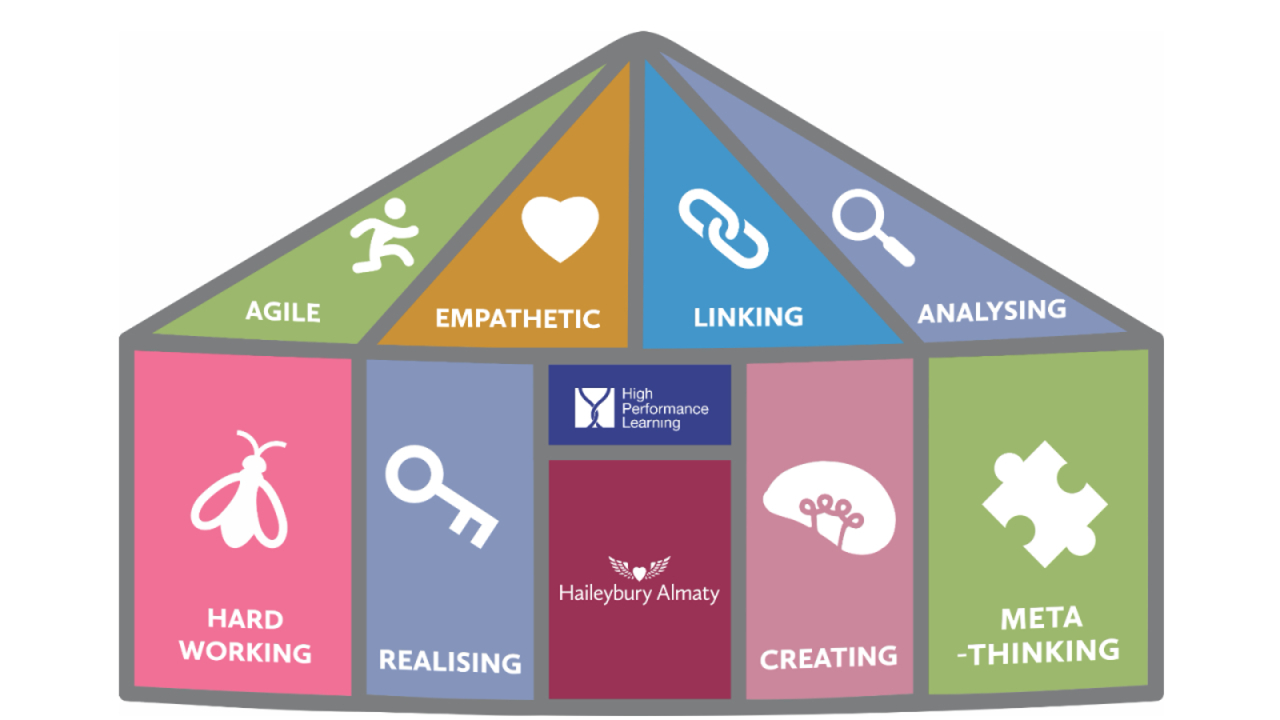- About Haileybury
- Admissions
- Events
- School 3D tour
- News
- Contacts
- Payment
Creating
High Performance Learning (HPL) - Creating
In summary, these characteristics help children cope independently when parents and other adults are not there to help solve problems. They offer the possibilities for solving problems we cannot even yet anticipate — particularly helpful in such a fast-changing world.
This is a set of five characteristics focused on creative thinking and learning. The five characteristics are:
- intellectual playfulness;
- flexible thinking;
- fluent thinking;
- originality;
- evolutionary and revolutionary thinking;
Let’s look at the five characteristics in detail:
1) Intellectual playfulness
This is the ability to recognise rules and bend them to create valid but new forms. Inventors do this all the time, as do composers and artists. Encouraging playfulness in learning is helpful because it is creative, motivating and not linked to convention. Intellectual playfulness builds learning stamina and helps to put an individual more in control of their own learning and be more confident.
2) Flexible thinking
This is the ability to abandon one idea for a superior one or generate multiple solutions. This requires the ability to think about two different concepts and to think about multiple concepts simultaneously. The ability to think flexibly is a higher order cognitive skill and a key part of the toolkit for those who achieve high levels of cognitive performance. Intellectual confidence is needed in order to take the risk of thinking flexibly and not settle for the first answer. This can be taught and developed.
3) Fluent thinking
This is the ability to generate lots of ideas, to understand that your best idea might not be your first and to keep on thinking until you're sure you've reached your best idea. Adults at work who use brainstorming when they get together with colleagues to tackle a problem are indulging in fluent thinking. Fluency is about generating ideas, not evaluating them.
4) Originality
This is the ability to conceive something new. It is at the crux of innovation and unless children and young people are actively encouraged to be original, and not just come up with the ‘right answer’, they might keep their ideas to themselves for fear of being wrong. Something original doesn’t have to be a life-changing discovery, it could be a simple solution or new approach to an ordinary problem. Very little is completely original but everyone could make incrementally original discoveries which moves thinking on. Encouraging the confidence to break with tradition is a valuable attribute to nurture and is something the advanced learner does well.
5) Evolutionary and revolutionary thinking
This is the ability to create new ideas by building on existing ideas or diverting from them. This helps in enabling children and teens to move away from existing ideas towards developing their own. The advanced performer is unafraid of developing novel ideas that are different to existing ones. This courage needs to be developed and valued.
(Extracts taken from ‘Great Minds and How to Grow Them: High Performance Learning’- Wendy Berliner and Deborah Eyre)
What would you like to do?

